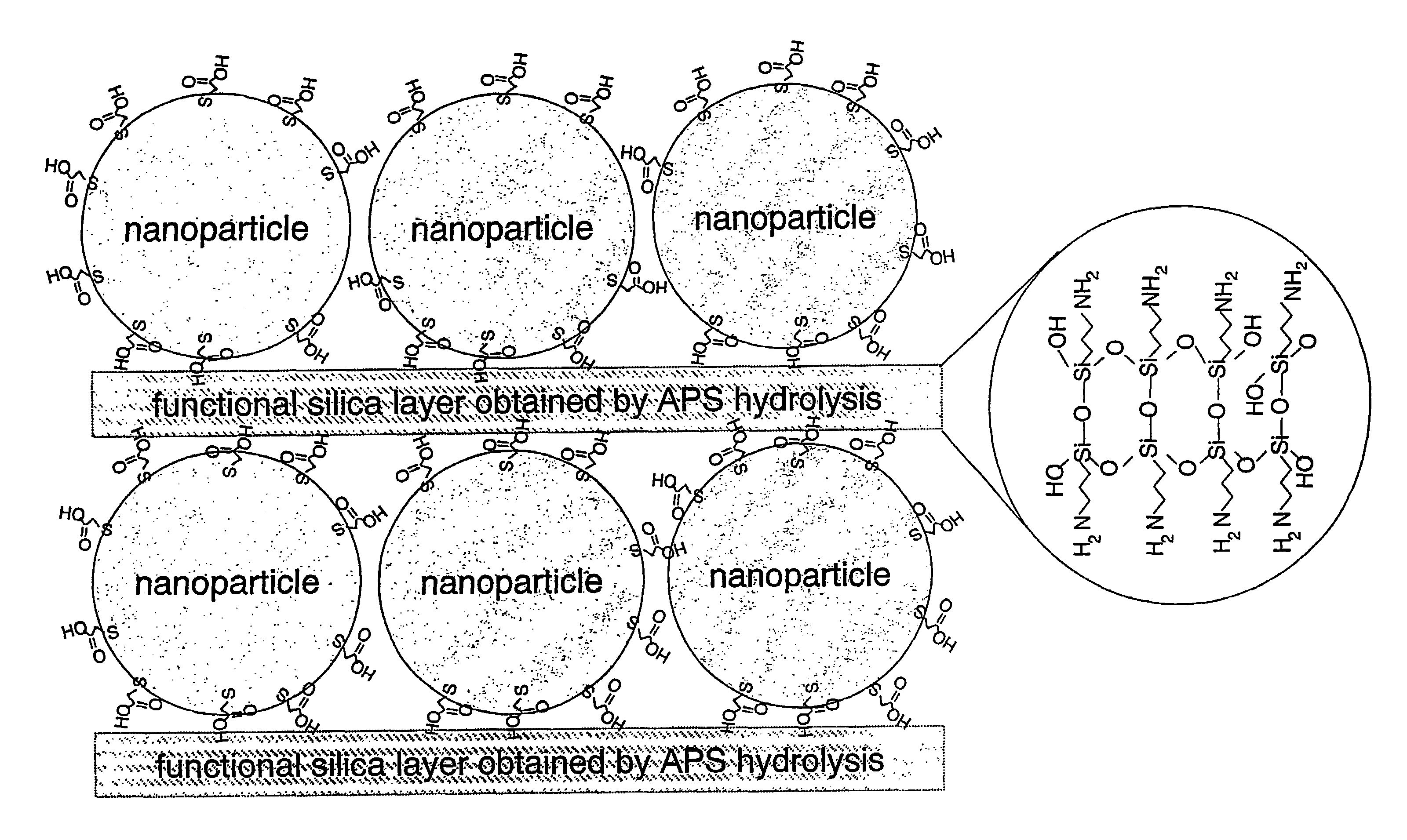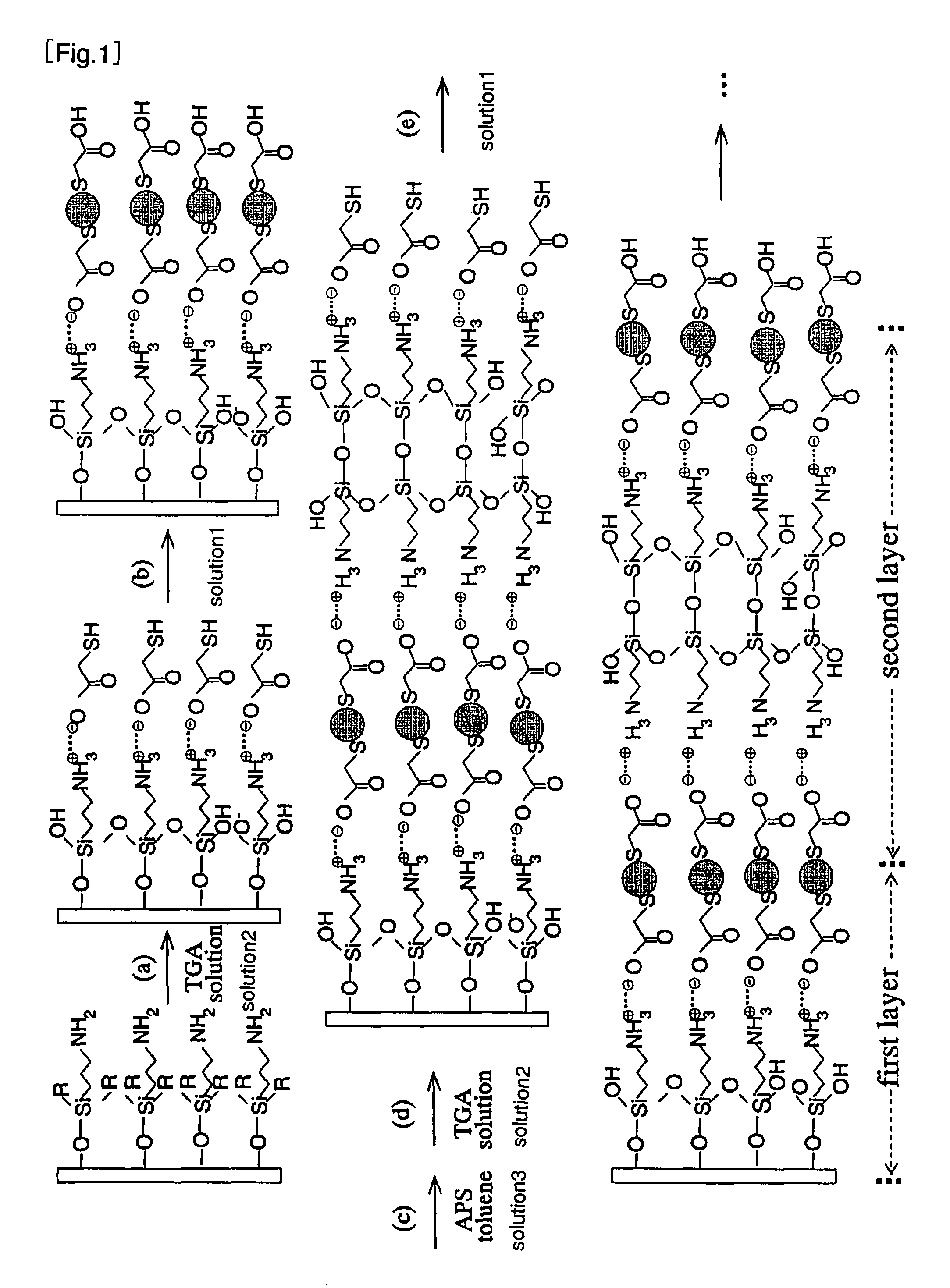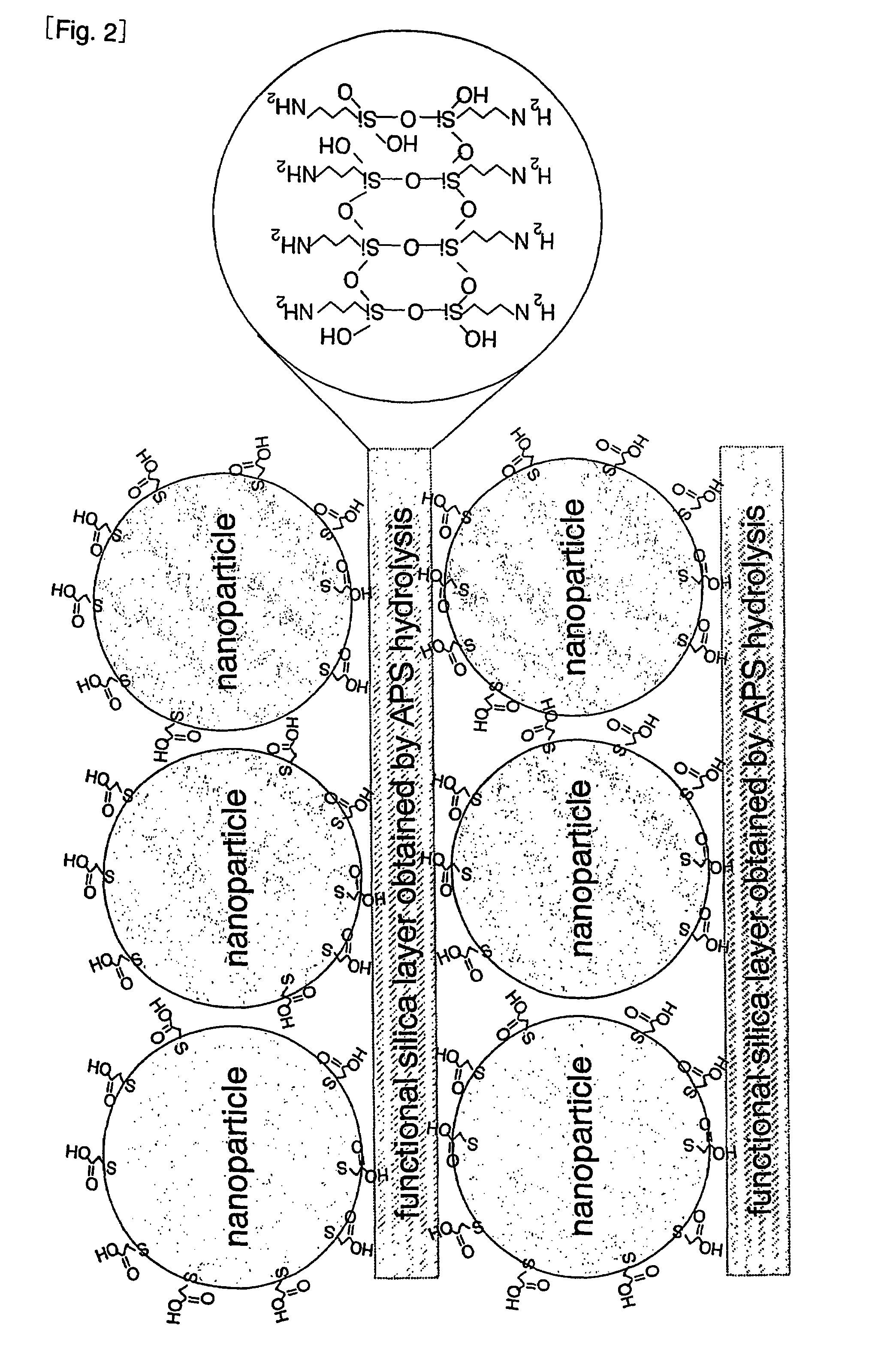Fluorescent material with semiconductor nanoparticles dispersed in glass matrix at high concentration and method for manufacturing such fluorescent material
a technology of glass matrix and semiconductor nanoparticles, which is applied in the field of fluorescent materials, can solve the problems of unstable semiconductor nanoparticles produced by the aqueous solution method, low light, heat, chemical resistance of polymers used as a matrix, and unsuitable industrial applications, and achieves high fluorescence quantum yield, high concentration, and high brightness
- Summary
- Abstract
- Description
- Claims
- Application Information
AI Technical Summary
Benefits of technology
Problems solved by technology
Method used
Image
Examples
example 1
[0139]A glass thin film with a dispersion of cadmium telluride nanoparticles emitting red light was manufactured by the layer-by-layer method using aminopropyltrimethoxysilane (APS).
[0140]The cadmium telluride nanoparticles were manufactured in accordance with an existing method (Li, Murase, Chemistry Letters, volume 34, page 92, 2005). More specifically, cadmium perchlorate (hexahydrate, 1.095 g) was dissolved in 200 ml of water. To this, thioglycolic acid, (TGA) as a surfactant, was added in an amount of 1.5 times the mols of cadmium perchlorate. To the result, 1 N aqueous solution of sodium hydroxide was added to adjust the pH to 11.4. After degassing for 30 minutes, hydrogen telluride gas was introduced in an inert atmosphere while stirring vigorously. After stirring for 10 minutes, a condenser was attached for refluxing at about 100° C. Cadmium telluride particles grew by refluxing, and the wavelength of emitted light shifted from green to red.
[0141]First, refluxing was suffici...
example 2
[0150]The same procedure as in Example 1 was followed except that the slide glass was immersed in an aqueous solution of thioglycolic acid (TGA), i.e., “solution 2” for about 7 minutes, thereby manufacturing a thin-film fluorescent material with a dispersion of nanoparticles having a concentration of the nanoparticles in the thin film of 4×10−3 mol / l and having a fluorescence quantum yield of 25%.
[0151]Thus, it was found that a glass thin film whose concentration is 10−3 mol / l order and which has a fluorescence quantum yield exceeding 20% was obtained by the layer-by-layer method.
example 3
[0152]The same procedure as in Example 1 was followed except that the lamination cycle was repeated 40 times, thereby manufacturing a thin-film fluorescent material with a dispersion of nanoparticles having a concentration of the nanoparticles in the thin film of 9×10−3 mol / l and having a fluorescence quantum yield of 21%. In this case, it was confirmed that the film thickness of the fluorescent material was about 0.2 μm.
PUM
| Property | Measurement | Unit |
|---|---|---|
| diameter | aaaaa | aaaaa |
| fluorescence quantum yield | aaaaa | aaaaa |
| thickness | aaaaa | aaaaa |
Abstract
Description
Claims
Application Information
 Login to View More
Login to View More - R&D
- Intellectual Property
- Life Sciences
- Materials
- Tech Scout
- Unparalleled Data Quality
- Higher Quality Content
- 60% Fewer Hallucinations
Browse by: Latest US Patents, China's latest patents, Technical Efficacy Thesaurus, Application Domain, Technology Topic, Popular Technical Reports.
© 2025 PatSnap. All rights reserved.Legal|Privacy policy|Modern Slavery Act Transparency Statement|Sitemap|About US| Contact US: help@patsnap.com



